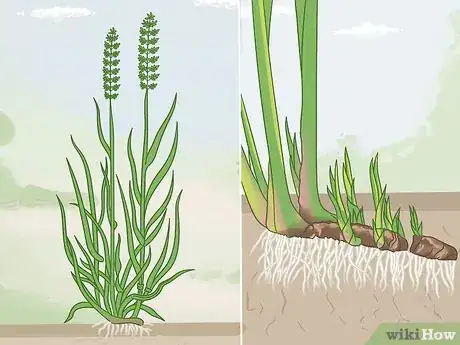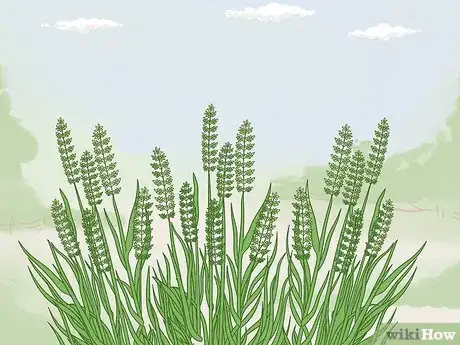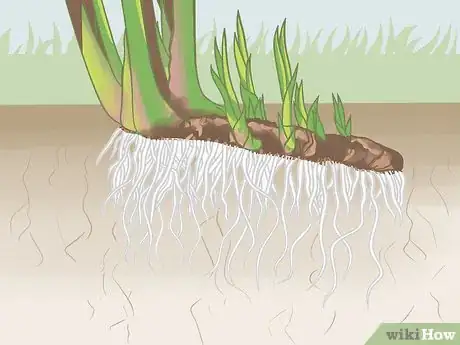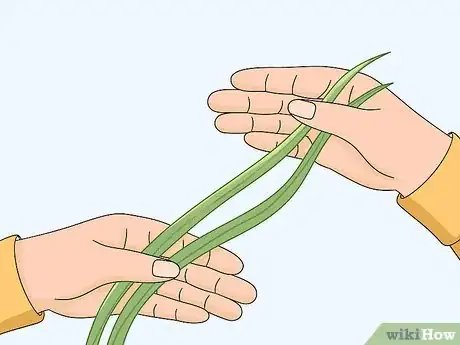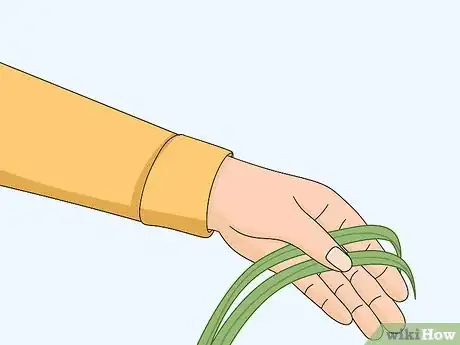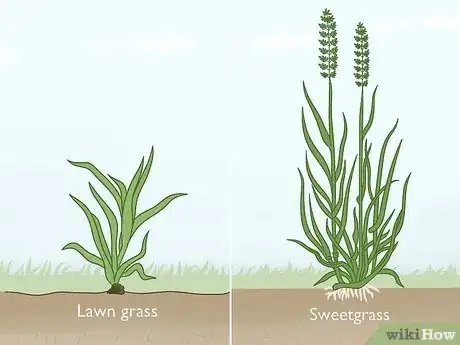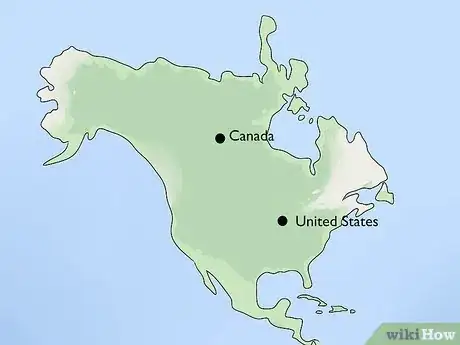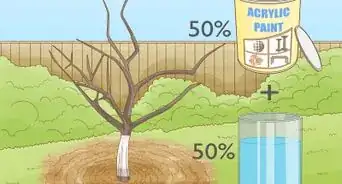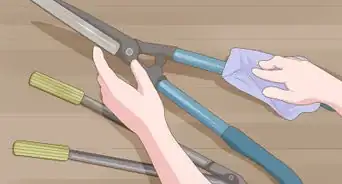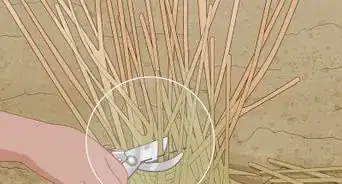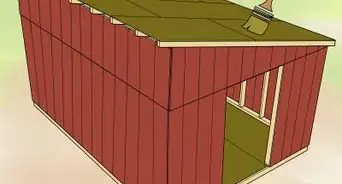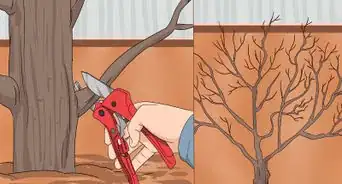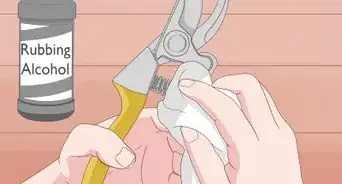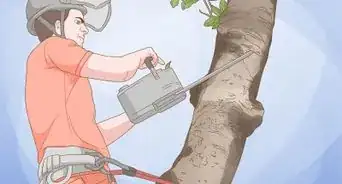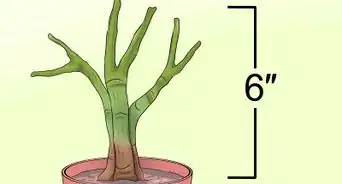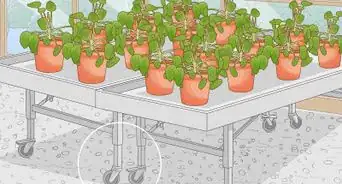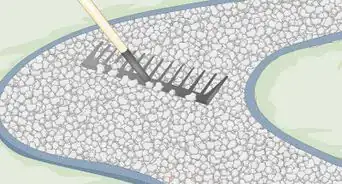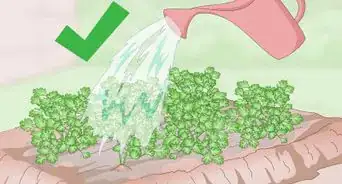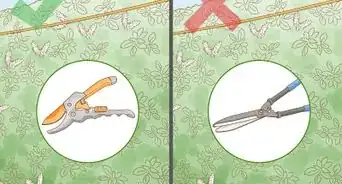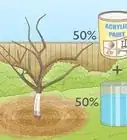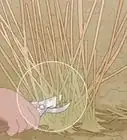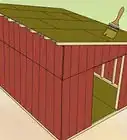This article was co-authored by wikiHow staff writer, Janice Tieperman. Janice is a professional and creative writer who has worked at wikiHow since 2019. With both a B.A. and M.A. in English from East Stroudsburg University, she has a passion for writing a wide variety of content for anyone and everyone. In her free time, you can find her working on a new crochet pattern, listening to true crime podcasts, or tackling a new creative writing project.
There are 7 references cited in this article, which can be found at the bottom of the page.
wikiHow marks an article as reader-approved once it receives enough positive feedback. In this case, 94% of readers who voted found the article helpful, earning it our reader-approved status.
This article has been viewed 85,105 times.
Learn more...
Sweetgrass, botanically known known as Hierochloe odorata or Anthoxanthum, is a tall, flowering grass that grows near wetlands and rivers across the United States and Canada. This plant has played a significant role in Native history, and is sometimes used in basket making and other craft projects. If you’re trying to find some sweetgrass of your own, you shouldn’t have much trouble as long as you remember what the plant looks like and where it grows.
Steps
Noticing Certain Physical Characteristics
-
1Check the plant to see if it’s both green and purple. Examine the top and middle sections of the stem to confirm that the plant is green throughout. After this, check toward the roots of the plant to see if the lower stem looks purple or reddish-purple. If the plant doesn’t change colors at all, then it might not be sweetgrass.[1]
-
2Look for clusters of yellow-green spikelets or flowers. Like the majority of the stem, some spikelets might look green, or have a yellowish on the ends.[2] You may also see bronze spikelets or white flowers growing from the sweetgrass.[3]
Did you know? Sweetgrass is also called vanilla grass, and is known for having a nice smell. The pleasant scent comes from the coumarin, an organic coagulant that’s naturally found in the plant.[4]
Advertisement -
3Examine the roots to see if they’re white. Tug on the grass to uproot it completely. Look at any offshoots or roots growing from the basis of the plant and see if they’re white. If they’re some other color, there’s a chance that the plant isn’t sweetgrass.[5]
-
4
-
5Touch the leaves to see if they feel rough. Look for long, green leaf blades leaves growing from the bottom of the sweetgrass. These leaves don’t have any fuzz or hair, but instead feel a bit rough around the edges. In many cases, sweetgrass leaves can be as long as 12 to 24 in (30 to 61 cm).[8]
-
6Measure the plants to see if they’re shorter than 3 ft (91 cm). Use a yardstick or tape to measure the potential sweetgrass from the roots to the tallest leaf or spikelet. Note that most plants grow to be about 30 in (76 cm) high.[9]
- As a grass, sweetgrass tends to grow in groups.
-
7Look at the branches to see if they’re short. Unlike lawn grass, note that sweetgrass has spikelets, or flowering buds sticking off the sides. On average, this section of the plant tends to be around 1.6-3.5 (4-9 cm) long, with 3 buds growing from each spikelet.[10]
Searching in the Right Places
-
1Find this plant in most of the US and Canada. Note that sweetgrass is native to many northern, mid-Atlantic, midwestern, northwestern, western, and southwestern states, as well as all of Canada. If you live in the southern US, there’s a good chance that won’t find any sweetgrass around.[11]
- For instance, sweetgrass isn’t native to states like Texas, Louisiana, Alabama, Georgia, or Florida.
- You can also find sweetgrass in some sections of Iceland, northern Eurasia, and Greenland.[12]
-
2Search in wet, partially shaded areas for sweetgrass. Note that sweetgrass thrives in moist, watery environments, and you can likely find it near marshes, wet meadows, lakeshores, bogs, and other wet places. Its exact location will ultimately depend on the area you’re searching in.[13]
- Sweetgrass can also grow near the ocean.[14]
Did you know? Reed sweetgrass is an invasive weed that grows near wetlands. This plant can grow to be up to 8 ft (2.4 m) tall, and it creates long, expansive root systems.[15]
-
3Check to see if the plant is blooming between May and July. Keep in mind that sweetgrass plants tend to flower earlier than other plants, so you might see this plant before you see other flowers and trees growing. Note that sweetgrass most consistently blooms in the summer months.[16] #* Sweetgrass is used in certain crafts and medicinal items, and it tends to look brownish after it dries.[17]
References
- ↑ https://www.nrcs.usda.gov/Internet/FSE_PLANTMATERIALS/publications/mipmctn12298.pdf
- ↑ https://www.nrs.fs.fed.us/sustaining_forests/conserve_enhance/special_products/maine_ntfp/plants/sweetgrass/
- ↑ https://www.nrcs.usda.gov/Internet/FSE_PLANTMATERIALS/publications/mipmctn12298.pdf
- ↑ https://www.nrcs.usda.gov/Internet/FSE_PLANTMATERIALS/publications/mipmctn12298.pdf
- ↑ https://www.nrcs.usda.gov/Internet/FSE_PLANTMATERIALS/publications/mipmctn12298.pdf
- ↑ https://www.nrcs.usda.gov/Internet/FSE_PLANTMATERIALS/publications/mipmctn12298.pdf
- ↑ https://www.nrcs.usda.gov/Internet/FSE_PLANTMATERIALS/publications/mipmctn12298.pdf
- ↑ https://www.nrcs.usda.gov/Internet/FSE_PLANTMATERIALS/publications/mipmctn12298.pdf
- ↑ https://www.nrs.fs.fed.us/sustaining_forests/conserve_enhance/special_products/maine_ntfp/plants/sweetgrass/
- ↑ https://www.nrs.fs.fed.us/sustaining_forests/conserve_enhance/special_products/maine_ntfp/plants/sweetgrass/
- ↑ https://www.minnesotawildflowers.info/grass-sedge-rush/sweetgrass
- ↑ https://www.thecanadianencyclopedia.ca/en/article/sweetgrass
- ↑ https://www.minnesotawildflowers.info/grass-sedge-rush/sweetgrass
- ↑ https://www.nrs.fs.fed.us/sustaining_forests/conserve_enhance/special_products/maine_ntfp/plants/sweetgrass/
- ↑ https://www.nwcb.wa.gov/weeds/reed-sweetgrass
- ↑ https://plants.usda.gov/plantguide/doc/cs_hiod.docx
- ↑ http://www.nativetech.org/plants/sweetgrass.html
